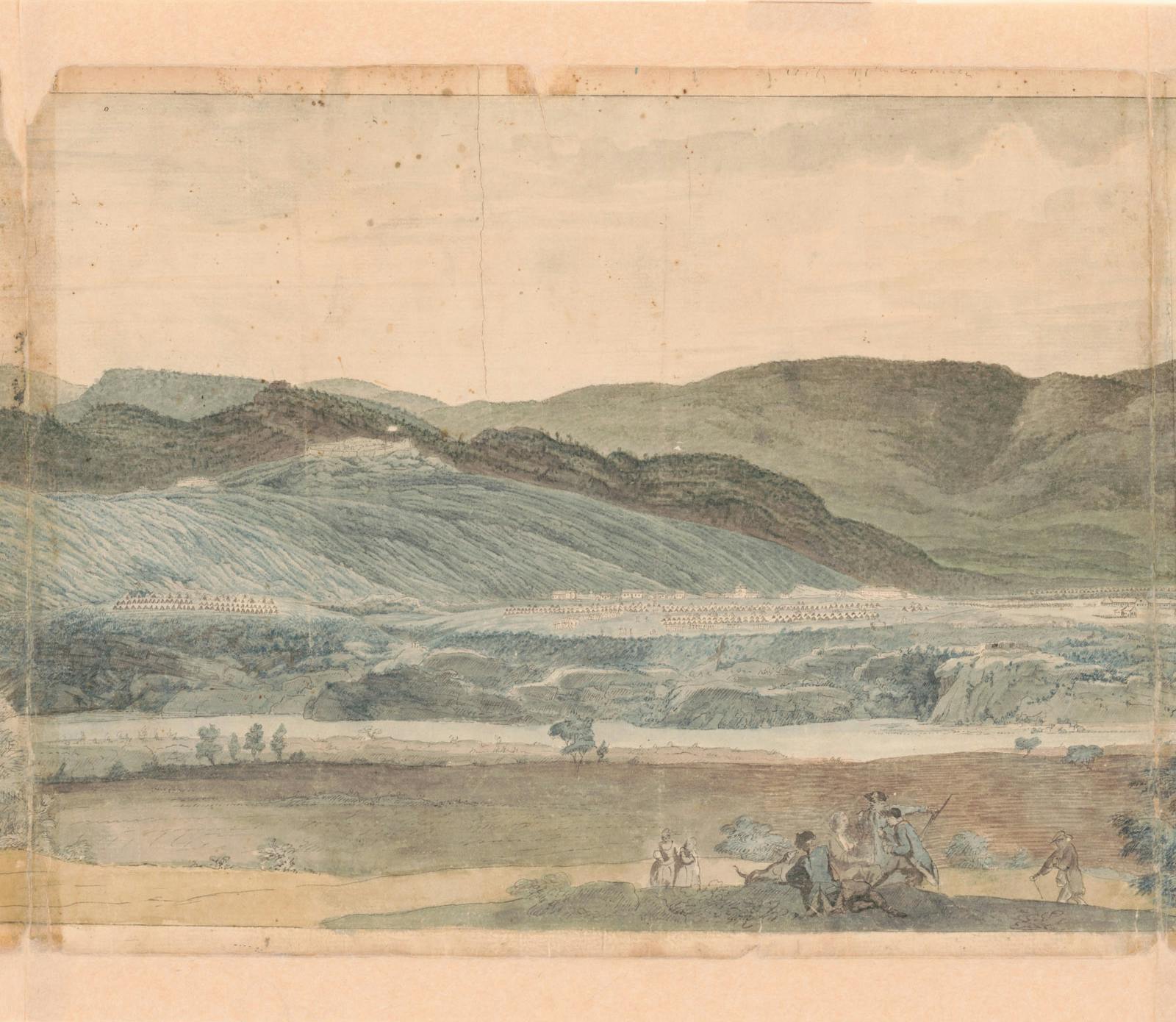West Point
Headquarters
Take a closer look at the buildings and parade ground at West Point. Cadets at the United States Military Academy continue to train on the same ground where the Continental Army encamped during the Revolutionary War.
Image courtesy of Library of Congress, Prints and Photographs Division, Washington, D.C.

